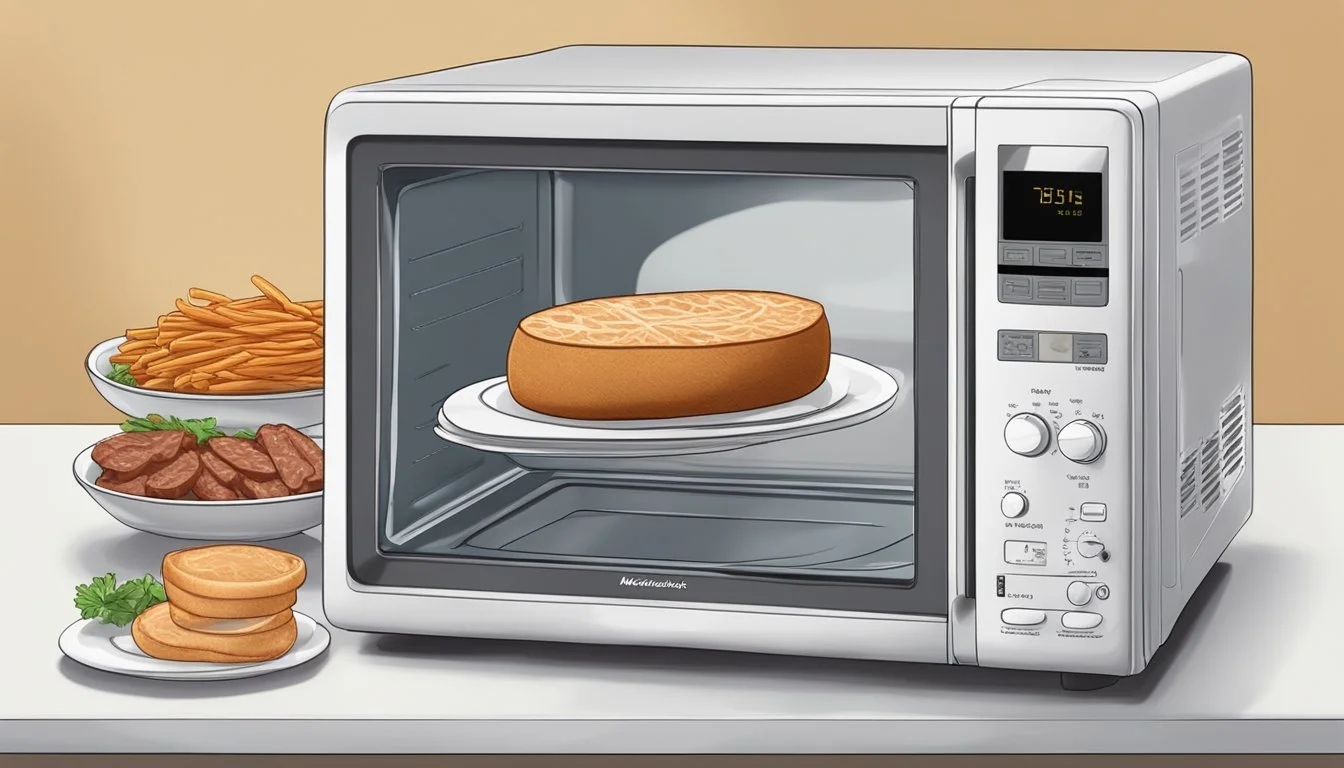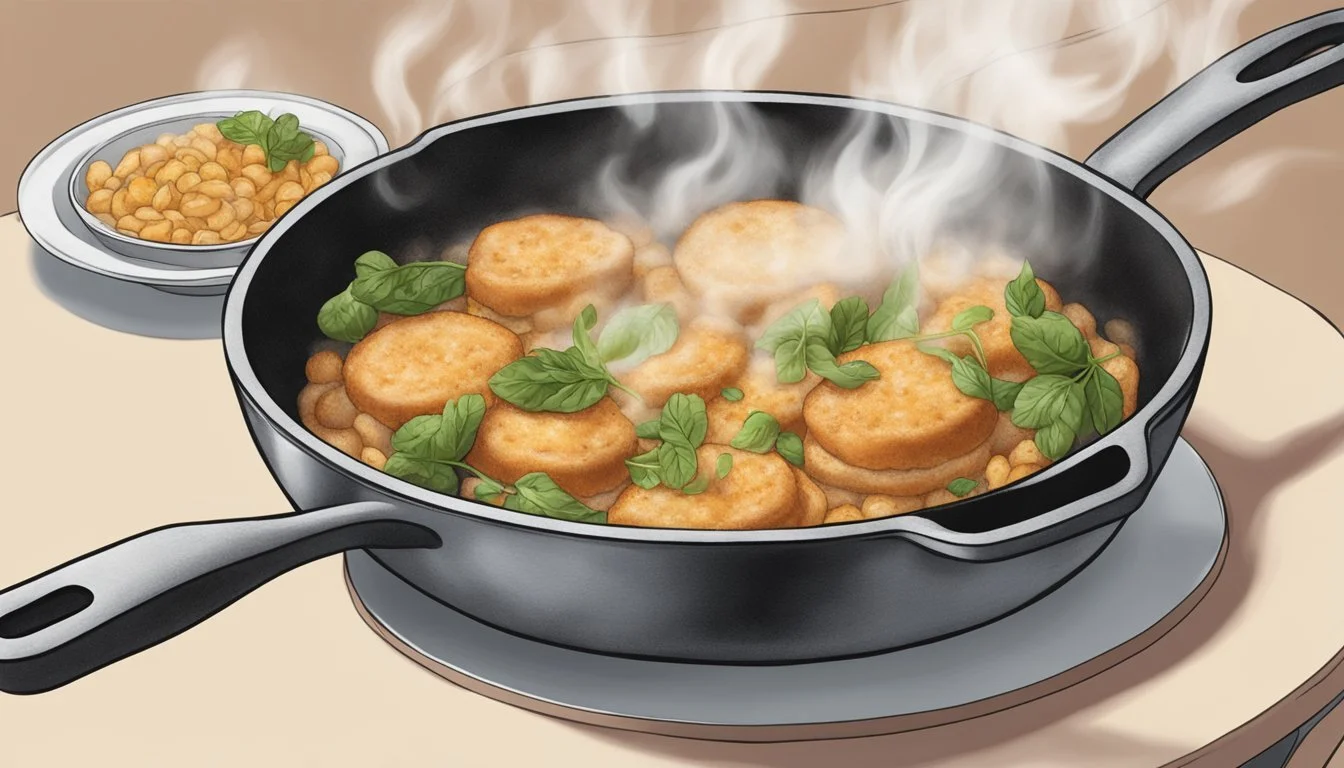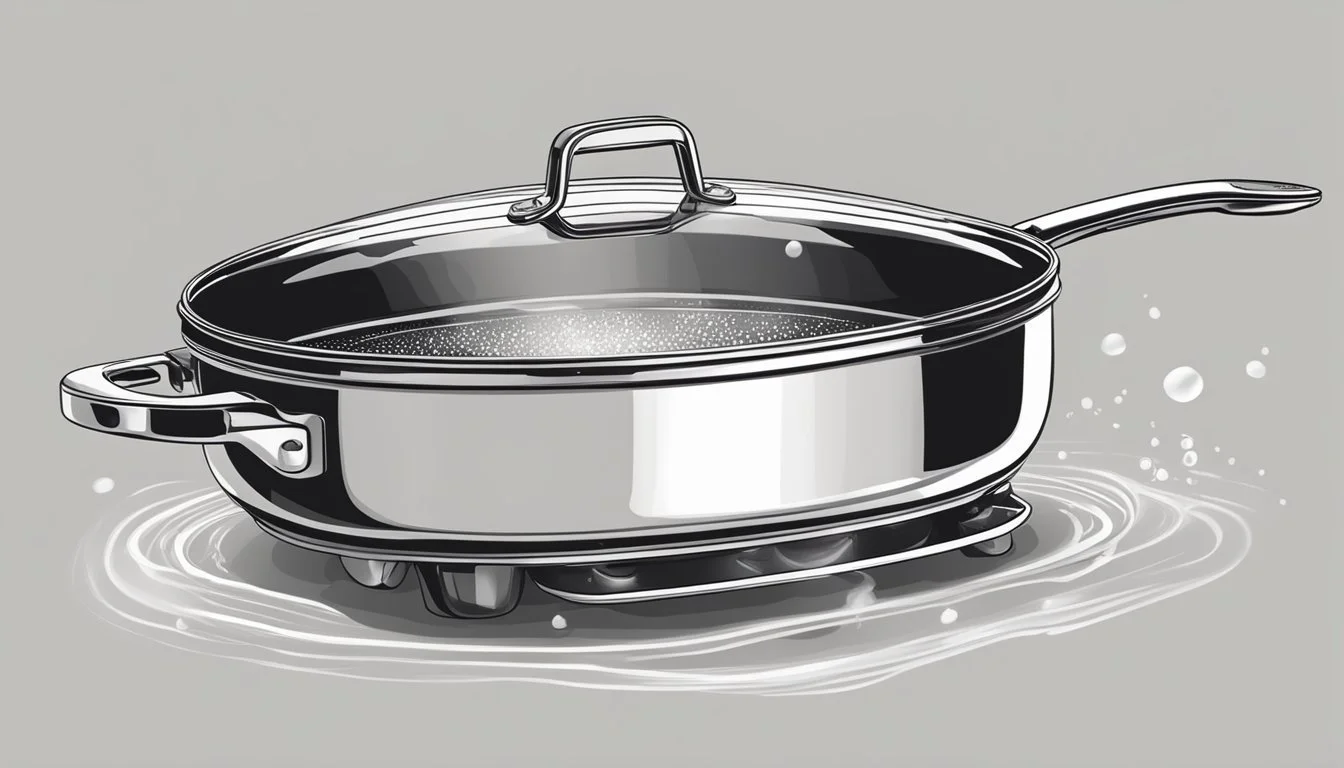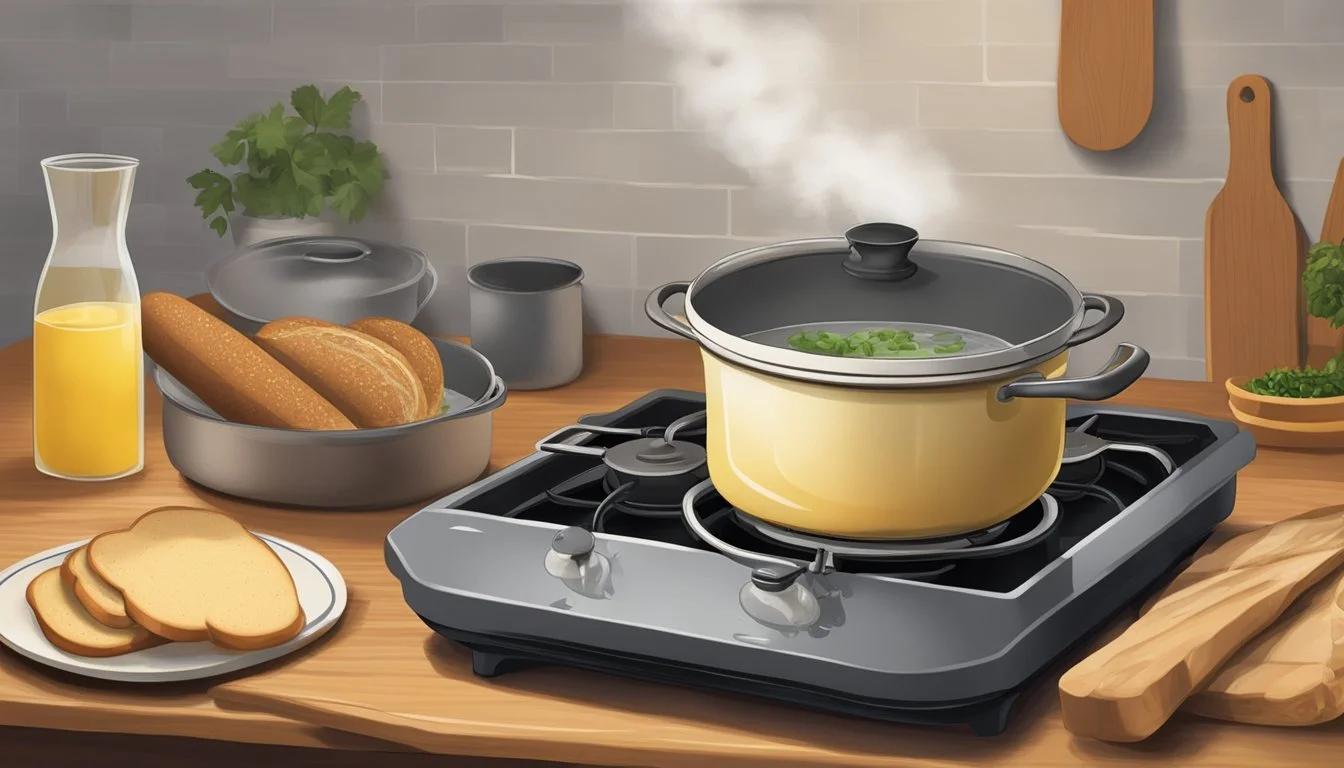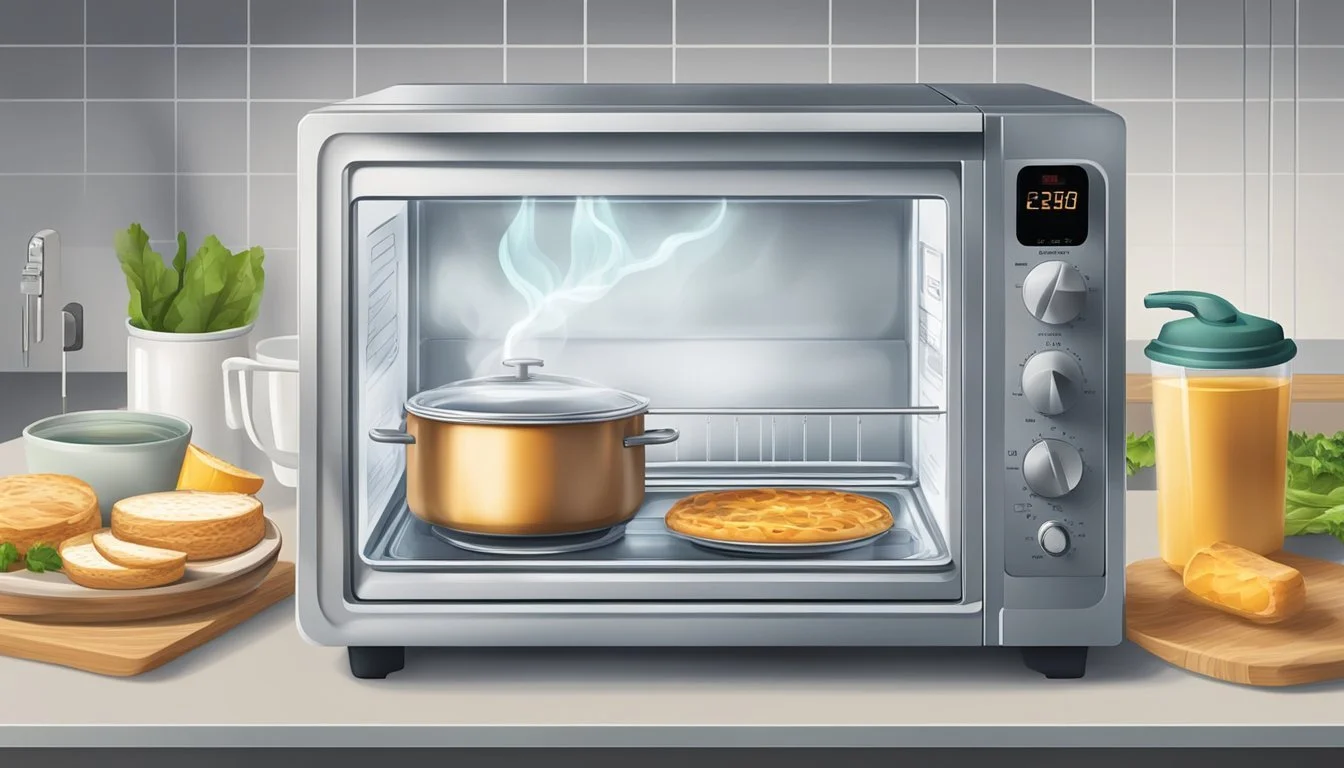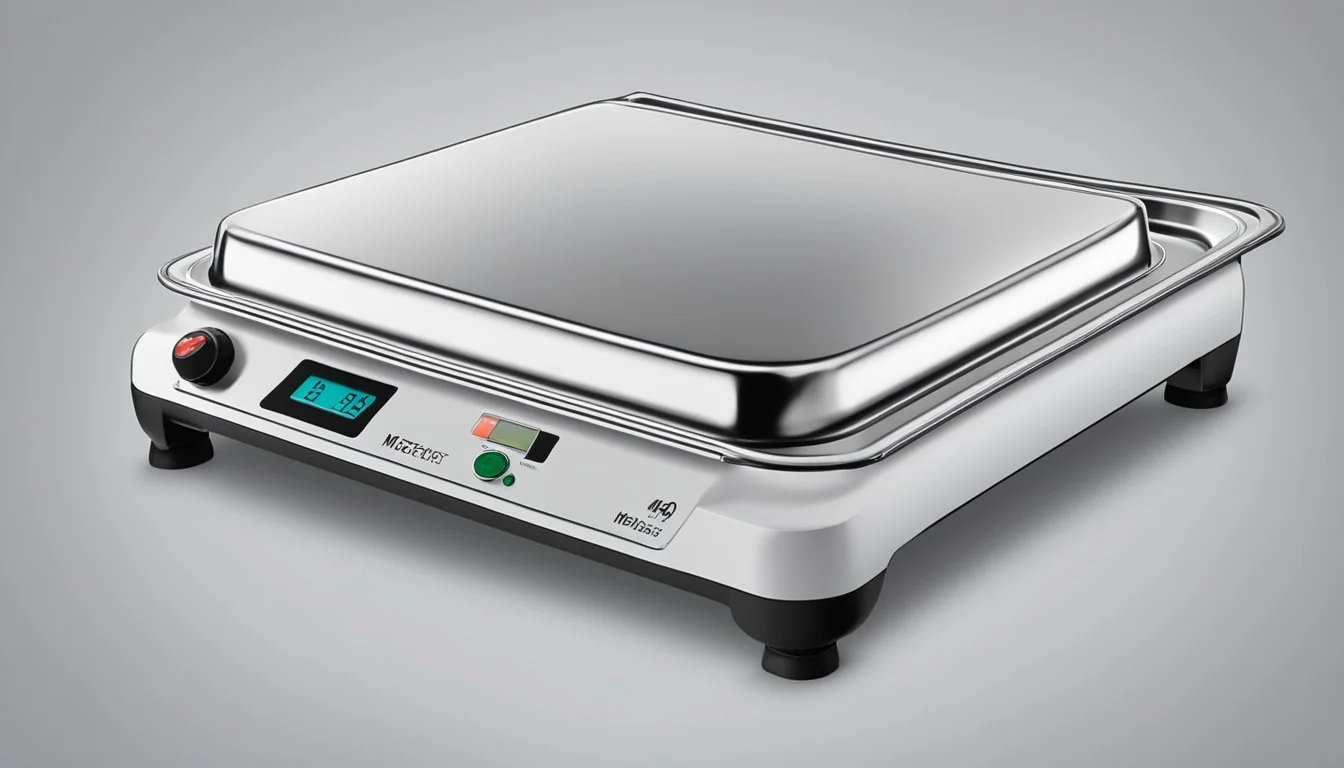Best Way to Reheat Mettwurst
Ensuring Tender and Flavorful Results Every Time
Reheating Mettwurst, a type of German sausage, requires attention to detail to preserve its tenderness and flavor. As a smoked and often fully cooked product, Mettwurst lends itself to a variety of dishes, from traditional German meals to modern cuisine. To enjoy Mettwurst at its best, reheating should be done carefully; too much heat can make it tough and bland, while the proper technique can ensure it remains as flavorful as when it was first prepared.
When reheating Mettwurst, the key is to use gentle heat to prevent the sausage from drying out or becoming rubbery. This can be attributed to its texture and composition, which are different from fresh sausages and therefore may require a different approach to reheating. The process, if done correctly, ensures that the Mettwurst stays juicy and full of flavor, replicating the enjoyable experience of a freshly cooked sausage.
An efficient method to reheat Mettwurst involves using a low-temperature setting in a smoker or oven, which gradually warms the sausage to the desired internal temperature without compromising its integrity. This method not only preserves the moisture and texture but also enhances the natural smoky flavor innate to Mettwurst. The end goal is to achieve a product that is evenly warmed, succulent, and ready to complement any dish it accompanies.
Understanding Mettwurst
Mettwurst is a German sausage known for its rich flavors, often enjoyed for its tender and juicy texture. This section delves into the types of Mettwurst available and the health benefits of consuming high-quality variants.
Different Types of Mettwurst
Mettwurst comes in various forms, each with distinctive qualities affecting taste and texture. Here are two common types:
Rohwurst: This is an uncooked sausage made from ground pork and finely chopped beef. It undergoes curing and cold smoking or air drying. It's known for its soft, spreadable texture and is often served with bread.
Cooked Mettwurst: Unlike Rohwurst, cooked Mettwurst is pre-cooked and ready to eat. It can be enjoyed warmed or at room temperature and typically has a firmer texture than its raw counterpart.
Health Benefits of Quality Mettwurst
When selecting a Mettwurst, opting for quality can significantly impact its health contributions:
Lean Meat: Quality Mettwurst made with lean beef can be a good source of protein and essential nutrients while maintaining lower levels of fat.
Nutrient-Rich: High-quality Mettwurst is rich in vitamins and minerals, such as B-vitamins, which are crucial for various body functions including metabolism and energy production.
Consuming Mettwurst as part of a balanced diet can add value to one's nutritional intake, but moderation is key to maximize benefits and maintain a healthy diet.
Preparation Before Reheating
Proper preparation is crucial for reheating mettwurst to ensure it retains its tenderness and flavor. The focus should be on bringing the mettwurst to an even room temperature and gathering the necessary tools for a controlled reheating process.
Bringing Mettwurst to Room Temperature
Before one begins the process of reheating, mettwurst should ideally be brought to room temperature. This step involves removing it from the refrigerator and allowing it to sit out for about 15-30 minutes. Doing so helps the sausage heat more evenly, preventing the exterior from becoming overcooked while the center remains cold.
Step 1: Take mettwurst out of the refrigerator.
Step 2: Let it rest outside, away from direct heat or sunlight.
Note: This step aids in preserving the moisture of the meat, as a gradual increase in temperature helps to prevent moisture loss.
Essential Tools for Proper Reheating
A successful reheating approach requires certain tools to ensure the mettwurst's internal temperature is properly managed without drying it out. Key among these tools is a reliable thermometer to monitor the internal temperature of the mettwurst.
Thermometer: An essential tool for checking that the mettwurst has reached the adequate internal temperature of 160°F without overcooking.
Reheating Equipment: Depending on the chosen method, one may need a skillet, oven, or smoker specifically calibrated to the correct temperature settings.
By adhering to these preparatory steps, one establishes a foundation to reheat mettwurst such that it remains moist and flavorful throughout the process.
Reheating Techniques
Reheating Mettwurst properly is crucial to preserving its tenderness and flavor. The following reheating methods offer solutions for different needs, from preserving moisture to achieving a quick warm-up.
Oven Reheating for Even Heat Distribution
To reheat Mettwurst in the oven, one should preheat it to a low temperature of 250-300°F to avoid drying out the sausage. The Mettwurst should be wrapped in aluminum foil to retain its moisture during the reheating process. This method allows heat to distribute evenly, gently bringing the sausage to the desired temperature without compromising its texture.
Stovetop Reheating for Controlled Temperature
For those seeking precise temperature control, reheating Mettwurst on the stovetop is advisable. Using a skillet over medium heat, add a small amount of broth or water to create steam, which can help to keep the sausage juicy. Heating the Mettwurst slowly and carefully ensures that it warms through without becoming overcooked or tough.
Microwave Reheating for Quickness
The microwave is the quickest method for reheating Mettwurst. To avoid uneven heating or drying, one should cover the sausage with a damp paper towel and use a low-power setting. Heat in short intervals, checking the temperature periodically to prevent overheating. While this method is fast, it may not preserve the texture as well as other methods.
Sous Vide Reheating for Precision
Sous vide is a method that offers precision and can gently reheat Mettwurst without the risk of drying it out. By vacuum-sealing the sausage and placing it in a water bath set to the desired final temperature, typically around 140°F, Mettwurst can be brought up to temperature gradually. This process helps to preserve its flavor and tenderness, making it a top choice for quality over speed.
Perfecting the Internal Temperature
When reheating Mettwurst, monitoring the internal temperature is crucial for ensuring optimal tenderness and flavor. A meat thermometer is an indispensable tool that should be used to check the Mettwurst's temperature during the reheating process.
Target Temperatures for Reheated Mettwurst:
Medium Rare: 130-135°F
Medium: 135-145°F
Well Done: 160°F and above
To achieve these temperatures, the Mettwurst should be slowly brought up to temperature to avoid drying out or overcooking. Begin reheating the Mettwurst at a smoker or oven temperature of 120°F and allow it to warm for several hours. Gradual heating is key to preserving the meat's moisture and texture.
Once the Mettwurst has gently warmed through, increase the heat of the smoker or oven to 160°F. Continue to cook the sausage until the desired internal temperature is reached. For Mettwurst, the recommended internal temperature is 150°F, falling into the medium well-done range to ensure food safety while maintaining tenderness.
Here’s a brief guideline for reheating Mettwurst:
Set smoker or oven to 120°F.
Place Mettwurst within and reheat for 6 hours.
Increase temperature to 160°F.
Reheat further until internal temperature is 150°F.
Always make sure that the Mettwurst is evenly heated, which can be facilitated by turning the sausage occasionally during the reheating process. After reaching the desired internal temperature, remove the Mettwurst from the heat, and allow it to rest. This resting period lets the juices redistribute, enhancing the overall flavor and tenderness.
Preventing Dryness and Overcooking
When reheating Mettwurst, maintaining tenderness and juiciness is of utmost importance to avoid dryness. The key lies in a gentle, low temperature approach that warms the sausage thoroughly without cooking it further. Preheating the oven to a moderate temperature, such as 250°F, is an effective method to achieve this.
It is advisable to place the Mettwurst on a baking tray or baking sheet to ensure even heat distribution. Wrapping the sausage in aluminum foil can help to trap moisture, effectively adding moisture back into the sausage and preventing it from drying out. The foil acts as a barrier, reducing the risk of overcooking.
Here is a concise guide on how to properly reheat Mettwurst:
Oven Temperature: Set the oven to a low 250°F to gently warm the Mettwurst.
Aluminum Foil: Wrap the Mettwurst in foil to keep the moisture intact and distribute the heat evenly.
Baking Tray: Position the wrapped Mettwurst on a tray to avoid direct heat exposure.
Heating Time: Monitor the Mettwurst while it reheats; it should not take more than a few minutes to warm through properly.
This process ensures that the Mettwurst remains soft and retains its inherent flavors. The use of foil is particularly helpful in protecting the sausage from the harsh oven environment. If done correctly, the Mettwurst will emerge as succulent and savory as when it was first prepared.
Enhancing Flavor During Reheating
When reheating Mettwurst, the goal is to restore its savory taste without compromising its tenderness. This can be achieved through the use of broths and sauces, dry rubs and marinades, and herbal infusions that complement the sausage's rich flavors.
Utilizing Broths and Sauces
Adding moisture and flavor to Mettwurst during reheating can be done effectively with broths and sauces.
Broths: Chicken or beef broth can be gently poured over the sausage before reheating. This not only prevents drying out but also adds a savory depth to the flavor.
Sauces: Consider a sauce that complements the existing seasoning of the Mettwurst. For instance, a barbecue sauce or a modest dab of butter can enrich the flavor while maintaining moisture.
Applying Dry Rubs and Marinades
Before reheating, applying a fresh layer of dry rubs or marinades can significantly enhance the Mettwurst's flavor profile.
Dry Rubs: A blend of spices such as garlic powder, paprika, and black pepper can be rubbed onto the surface. This creates a flavorful crust as the meat warms up.
Marinades: If time allows, a quick marinade using ingredients like olive oil, garlic, and herbs can infuse the sausage with additional flavors.
Leveraging Herbal Infusions
Herbs are a fantastic way to introduce new dimensions of flavor to reheated Mettwurst.
Herbs: Placing fresh herbs, such as rosemary or thyme, in the reheating environment imparts subtle aromas that enhance the sausage's taste.
Infusions: For a more pronounced herb presence, create an infusion with olive oil and your chosen herbs, and lightly brush it over the Mettwurst before reheating.
Serving and Accompaniments
When serving reheated Mettwurst, it's important to consider accompaniments that complement its rich flavors. Mettwurst pairs well with a variety of sides and can be featured in numerous dishes.
Salad: A fresh salad with a zesty vinaigrette balances the meat's smokiness. Options like a German potato salad or a simple green salad with cucumbers and a mustard dressing are excellent choices.
Sandwiches: Sliced Mettwurst can be added to sandwiches. Consider rye or sourdough bread and toppings such as sauerkraut, Swiss cheese, and a spread of stone-ground mustard for a traditional taste.
Gravy: A savory gravy can be poured over Mettwurst slices. Opt for a rich onion gravy or a cream-based sauce to add moisture and flavor.
Sides: Traditional German sides like sauerkraut, braised red cabbage, or spätzle complement the sausage well. Warm, crusty bread is also a hearty option.
For a balanced meal, consider the following serving suggestions:
Main Item Suggested Accompaniment Mettwurst German Potato Salad Mettwurst Sauerkraut Mettwurst Braised Red Cabbage Mettwurst Sourdough Bread Mettwurst Spätzle
A thoughtful approach to serving reheated Mettwurst with these accompaniments ensures a meal that is both tender and flavorful.
Proper Storage for Leftovers
Proper storage is crucial for maintaining the safety and quality of mettwurst leftovers. It ensures that the flavorful sausage retains its tenderness when reheated.
Cooling and Storing Practices
Leftovers should be brought to a safe temperature before storage. One should refrigerate mettwurst within two hours of cooking to prevent bacterial growth. To expedite cooling:
Cut the mettwurst into smaller pieces.
Place them in shallow containers to cool down more quickly.
For optimal food safety, the refrigerator temperature should be set at or below 40°F. Leftover mettwurst should be consumed within three to four days to ensure it remains safe and tasty.
Containers and Wrapping Techniques
Choosing the right storage containers is key for keeping leftover mettwurst fresh:
Use airtight containers to seal in freshness and avoid contamination.
If an airtight container is not available, tightly wrap the mettwurst in aluminum foil or plastic wrap.
These methods help to maintain moisture, which is essential for keeping the mettwurst tender. Additionally, they prevent the sausage from absorbing any odors from the refrigerator.
Troubleshooting Common Reheating Issues
When reheating mettwurst, maintaining tenderness and flavor is essential. However, sometimes one may encounter issues such as mettwurst being too rubbery or too chewy due to underheating or overheating. Here's how to address these problems.
Dealing with Underheating
If the mettwurst remains cold or rubbery in the center, it indicates underheating. To resolve this:
Increase Oven Time: Prolong the rehe
Alternative Reheating Methods
Air Fryer Technique
For those with an air fryer, reheating mettwurst efficiently captures the desired tenderness. Place the sausage in the air fryer basket, ensuring some space is left between each piece to allow for even heating. Set the air fryer to a moderate temperature, approximately 350°F, and cook for 4-6 minutes. This method allows for a quick reheating cycle that can also reintroduce a desirable slight crispiness to the skin.
Steaming Approach
Steaming is a gentle alternative that preserves moisture very well. One can use a steamer basket over boiling water, ensuring the mettwurst is not in direct contact with the water. Cover and allow the steam to heat the sausage through for about 7-10 minutes. This approach maintains the mettwurst’s flavor and juiciness.
Basking in Boiling Water
Another option involves submerging the mettwurst in gently simmering water but not boiling, for it can split the skin. This method can take anywhere between 5-10 minutes. The key here is to maintain water just below boiling to avoid mettwurst from becoming tough.
Slow Cooker Method
Those opting for a less attentive approach may utilize a slow cooker. Setting the appliance to a low heat setting can warm up the mettwurst gradually and keep it tender. This method might take longer, usually up to 30 minutes, but it ensures the mettwurst does not dry out or overcook.
Mettwurst is amenable to a variety of reheating methods, each with its advantages and suited to different situations. While the air fryer offers speed and a hint of crispiness, the other methods, such as steaming, boiling, and slow cooking, are excellent in keeping the sausage juicy and flavorful.
Health and Nutritional Considerations
When reheating Mettwurst, one's health and the nutritional quality of the food should be carefully considered. The methods used can affect both the nutrient content of the sausage and its alignment with a balanced diet.
Balancing Diet and Enjoyment
Reheating Mettwurst requires a method that does not add unnecessary calories or fats, to align with a nutritious, balanced diet. As Mettwurst is a processed meat, it's essential to consume it in moderation within a diet that includes a variety of lean cuts and plenty of vegetables. Methods that involve added oils or butters should be used sparingly.
Nutrient Retention in Reheating
Retaining nutrients during the reheating process is crucial:
Vitamins: Reheating should be done at a temperature that warms the Mettwurst without leading to a significant loss of heat-sensitive vitamins.
Proteins: Gentle warming preserves the protein content, ensuring that the Mettwurst remains a good source of this macronutrient.
To maintain the Mettwurst’s nutrients, it's advisable to:
Use a low temperature: A moderate oven set around 250-300°F helps prevent protein denaturation.
Avoid prolonged cooking: Overheating can lead to nutrient degradation, especially for water-soluble vitamins like vitamin C and some B vitamins.


